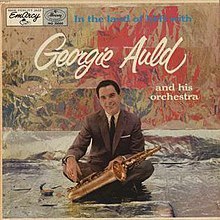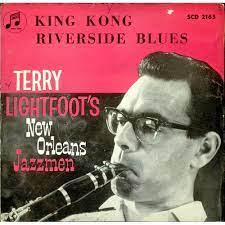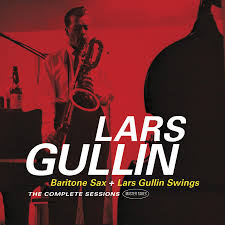
Daily Dose Of Jazz…
Ted Lewis was born Theodore Leopold Friedman on June 6, 1890 in Circleville, Ohio. His first instrument was the piccolo, however, he also learned to play the C-melody saxophone but was known principally as a clarinetist throughout his long career.
He was one of the first Northern musicians to imitate the style of New Orleans jazz musicians who came to New York in the 1910s. He first recorded in 1917 with Earl Fuller’s Jazz Band, a band attempting to copy the sound of the Original Dixieland Jass Band.
His earliest clarinet recordings were not very good but as his career gained momentum he refined his style under the influence of the first New Orleans clarinetists Larry Shields, Alcide Nunez, and Achille Baquet who relocated to New York.
By 1919, Lewis was leading his own band, and had a recording contract with Columbia Records. At the start of the Roaring Twenties, he was being promoted as one of the leading lights of the mainstream form of jazz popular at the time. He hired musicians Benny Goodman, Jimmy Dorsey, Frank Teschemacher, and Don Murray to play clarinet in his band. Over the years he hired trumpeter Muggsy Spanier and trombonist George Brunies as he led his band to be second only to the Paul Whiteman band in popularity.
One of his most memorable songs, Me and My Shadow, had usher Eddie Chester mimicking his movements during his act. He then hired four Black shadows, the most famous being Charles “Snowball” Whittier, making Lewis one of the first prominent white entertainers to showcase Black performers, albeit in stereotypical ways, to be onstage, on film, and eventually on network television.
Remaining successful through the Great Depression, Ted adopted a battered top hat for sentimental, hard-luck tunes. He kept his band together through the 1950s and continued to make appearances in Las Vegas, Nevada and on the popular television shows of the decade. He would go on to perform in the early talkie films by Universal Studios and Columbia Pictures.
Clarinetist, bandleader, and singer Ted Lewis, transitioned in his sleep from lung failure on August 25, 1971 in New York City. He was 81. His memorabilia resides in The Ted Lewis Museum, created by his wife Adah, located across the street from where he was born in Circleville.
More Posts: bandleader,clarinet,history,instrumental,jazz,music,vocal

Daily Dose Of Jazz…
Skeets Herfut was born Arthur Relsmond Herfut on May 28, 1911 in Cincinnati, Ohio and raised in Denver, Colorado. While attending the University of Colorado he played in different bands. By 1934 he was performing with Smith Ballew, and through the decade with Jimmy and Tommy Dorsey, and Ray Noble.
After moving to California, Herfut worked with Alvino Rey, then served in the Army from 1944 to 1945. After the war, he flourished as a studio musician in Hollywood, California and led his own band. Between 1946 and 1947 he performed with Benny Goodman and Earle Spencer.
Into the 1960s Skeets’ studio sessions were with Billy May, Louis Armstrong, Georgie Auld, Jack Teagarden, Stan Kenton and again with Goodman. By the end of the 1960s he joined the Ray Conniff orchestra for several tours of Japan and Germany as well as recording sessions during the 1970s.
Herfurt bacme a member of Lawrence Welk’s orchestra and weekly television show from 1979 to 1982, performing on lead alto saxophone. During his career he recorded with Glen Gray, Ray Anthony, Joe “Fingers” Carr, Frankie Carle, Larry Clinton, Bob Eberly, Helen O’Connell, The Four Freshmen, Bob Keene and Pete Rugolo.
Saxophonist and clarinetist Skeets Herfut, who appeared as a saxophonist in the 1956 film The Nightmare, playing clarinet on the soundtrack, and performed on the soundtrack to the 1974 film The Fortune, transitioned in New Orleans, Louisiana at the age of 80 on April 17, 1992.
More Posts: clarinet,history,instrumental,jazz,music,saxophone

Daily Dose Of Jazz…
Terence Lightfoot was born on May 21, 1935 in Potters Bar, Middlesex, England. He started his musical career as a vocalist during early school life, singing popular songs with a small amateur variety group. In 1949, he came to jazz while at Enfield Grammar School in Enfield Town, London, England. He changed from playing the trumpet to clarinet to meet the needs of the traditional Dixieland jazz band of his friends. After leaving school, he formed his first jazz band, the Wood Green Stompers.
In 1955 he formed the band Terry Lightfoot’s New Orleans Jazzmen. In the Sixties they had three minor hits in the UK Singles Chart in 1961 and 1962, True Love, King Kong and Tavern in the Town. The group made regular Sunday night appearances at the Wood Green Jazz Club.
Clarinetist Terence Lightfoot transitioned from prostate cancer in Milton Keynes General Hospital on March 15, 2013 at the age of 77.
More Posts: bandleader,clarinet,history,instrumental,jazz,music

Daily Dose Of Jazz…
Rod Cless was born George Roderick Cless on May 20, 1907 in Lenox, Iowa. He began playing in bands in college including the Varsity Five, darlings of Iowa State University. In the mid-’20s he relocated to Des Moines, Iowa where he first came into contact with an important influence, bandleader Frank Teschemacher, known as “Tesch” to his musical cohorts. The two went to Chicago, Illinois together and began playing with groups such as the orchestra of Charlie Pierce.
The late ’20s saw Cless touring in the south with Frank Quartell’s Band, including his first journey to New Orleans, Lousiana. Back in Chicago he squatted at the Wigwam Club and enlisted with the combo of Louis Panico, a fairly calm bandleader despite contrary indications suggested by his surname. During this time Rod began playing more saxophone and took part in gigs with a less pronounced jazz content. Extended club residencies and stay-at-home employment allowed him to expand his clarinet instruction.
By the spring of 1939 he returned to pure jazz work joining up with Muggsy Spanier’s band the Ragtimers, followed by two years with pianist Art Hodes. Other gigs in the ’40s included work with Marty Marsala, Ed Farley, Georg Brunis, and Wild Bill Davidson as well as Bobby Hackett. In 1944 he played with Max Kaminsky at New York City’s Pied Piper Club. when Cless suffered catastrophic injuries toppling over the railings of an apartment, subsequently surviving for only four days in the hospital. ~
Named George Roderick Cless, he was related by marriage to the much better-known reedman Bud Freeman, but certainly had a respectable career in the Dixieland ensembles of leaders such as Muggsy Spanier and Bobby Hackett.
After walking home the last night of a gig at the Pied Piper in New York City, clarinetist and saxophonist Rod Cless, who recorded with Muggsy Spanier tunes for Bluebird Records, fell several stories over the balcony of his apartment and transitioned from the fall four days later on December 8, 1944 at the age of 37.
More Posts: clarinet,history,instrumental,jazz,music,saxophone

Daily Dose Of Jazz…
Lars Gunnar Victor Gullin was born May 4, 1928 in Visby, Sweden. A child prodigy on the accordion, by age thirteen, he played clarinet in a military band and later learned the alto saxophone. After moving to Stockholm, Sweden in 1947 he became a professional musician as a pianist. Planning on a classical career he studied privately with classical pianist Sven Brandel.
He filled the baritone chair in Seymour Österwall’s band in 1949 by chance, it was enough for him to decide that it was an instrument with possibilities. He was influenced by baritone saxophonist Gerry Mulligan for the first time on the Birth of the Cool recordings. He worked as a member of Arne Domnérus’s septet for two years from 1951.
Gullin began working with visiting American musicians, recording with James Moody, Zoot Sims and Clifford Brown. Most importantly, he first performed with Lee Konitz in 1951, an association which was to be repeated several times in future years.
In 1953 formed his own group, probably the only regular group he was to lead. It was short-lived, breaking up later that year after Lars was responsible for causing the group to be involved in an automobile accident, although no one was seriously hurt. The next year, 1954, he won the best newcomer award in the American DownBeat magazine. Later his albums were leased to Atlantic Records in the United States and toured several European countries with Chet Baker in 1955.
The remainder of his career was blighted by his own narcotics problems and sometimes he survived on artists’ grants from the Swedish government. During most of 1959 he was active in Italy, he played with Chet Baker again and with the jazz alto saxophonist Flavio Ambrosetti, making radio broadcasts with him in Lausanne, Switzerland.
He recorded with Archie Shepp in 1963. One of his last major statements was his Aeros aromatic atomica suite recorded in 1973. A recording jointly led by Lee Konitz and pianist Lars Sjösten, Dedicated to Lee … Play the Music of Lars Gullin was recorded in 1983 and issued by Dragon Records. Baritone saxophonist Lars Gullin transitioned from a heart attack on May 17, 1976, brought on by his long-term addiction to methadone.
More Posts: bandleader,clarinet,history,instrumental,jazz,music,piano,saxophone



